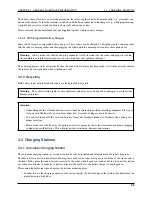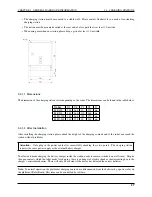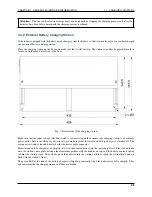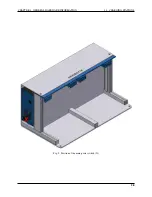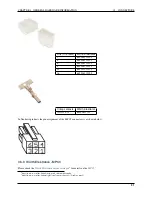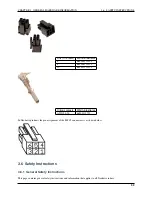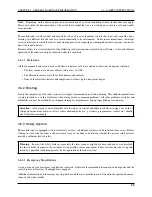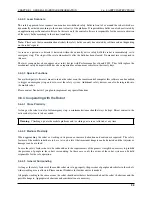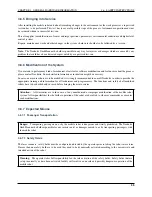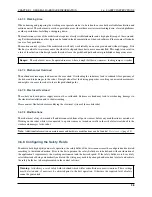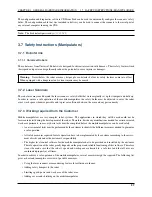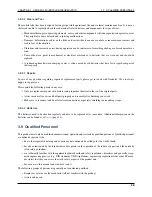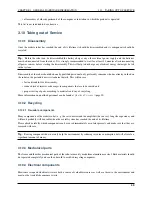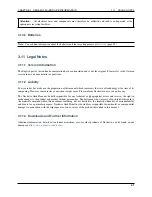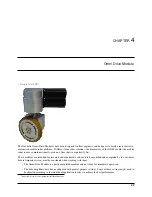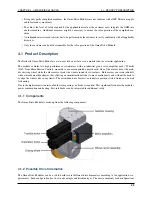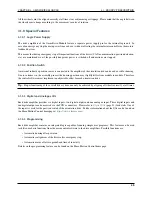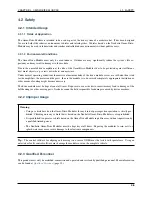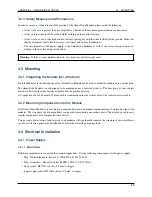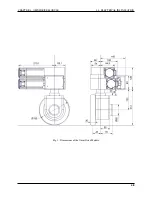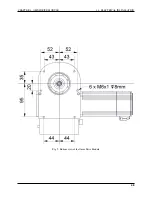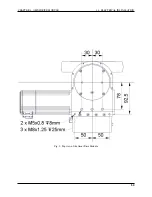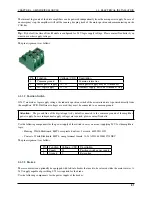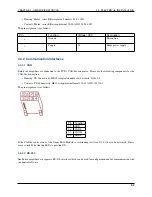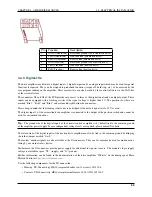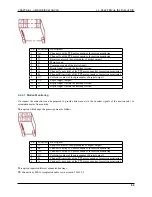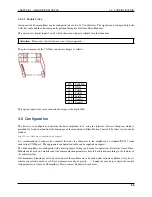
CHAPTER 3. GENERAL HARDWARE INFORMATION
3.10. TAKING OUT OF SERVICE
• all members of other departments of the company or institution in which the product is operated.
This list is not intended to be exhaustive.
3.10 Taking out of Service
3.10.1 Disassembly
Once the mobile robot has reached the end of its lifetime it should be disassembled and its components should be
recycled.
Tip:
Before the robot can be disassembled the battery charger, any other external power supply and the batteries
must be disconnected from the robot. It is strongly recommended to wait for at least 30 minutes after disconnecting
all power sources before starting the disassembly. This will help to discharge any electrical energy that might be left
in the system.
Disassembly of the robot should be done by qualified personnel only, preferably someone who has already worked on
the robot in the past and knows its technical details. This will ensure
• fast and trouble-free disassembly,
• reduced risk of injuries or damages to components that are to be reused and
• proper sorting of parts according to materials and way of recycling.
More information on qualified personnel can be found at
(page 39).
3.10.2 Recycling
3.10.2.1 Reusable components
Many components of the mobile robot (e. g. the servo motors and the amplifiers) have a very long life expectancy and
will most probably still be usable when the overall system has reached the end of its lifetime.
Please check carefully which components can be reused immediately or in later projects and make sure that they are
removed with care.
Tip:
Reusing components does not only help the environment by reducing resource consumption but will also safe a
significant amount of money.
3.10.3 Mechanical parts
The frame and the other mechanical parts of the robot are mostly made from aluminium or steel. Both materials should
be separated completely and can then be sold to certified recycling companies.
3.10.4 Electrical components
Electronic scrap and electrical wires are both a source of valuable resources as well as a threat to the environment and
must not be treated like consumer waste.
40

